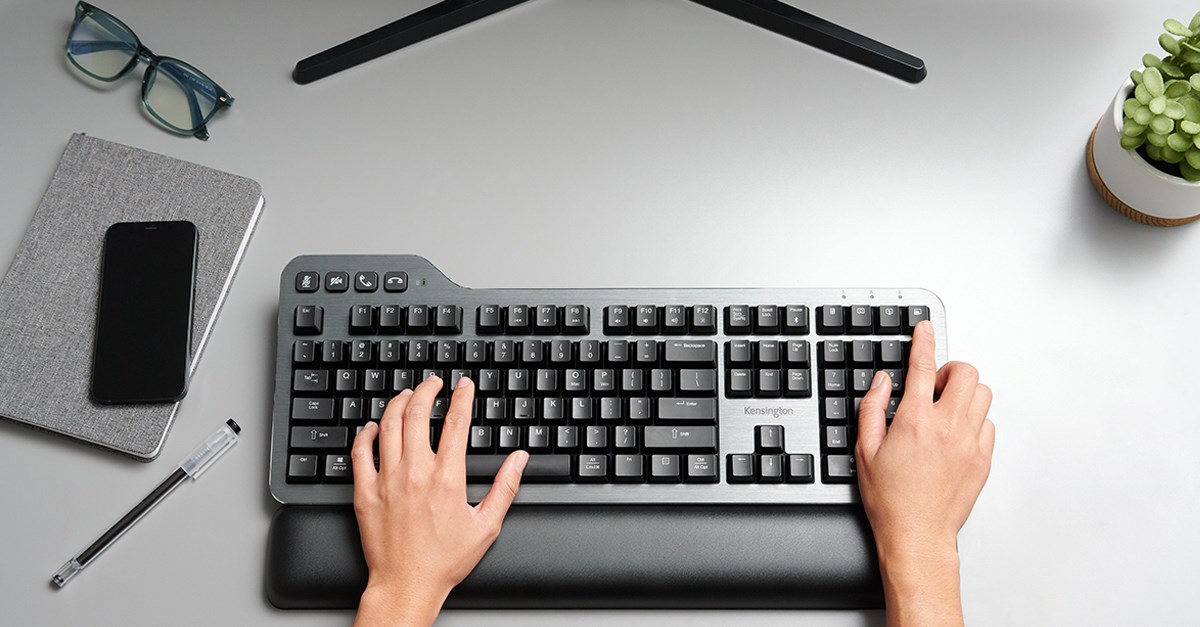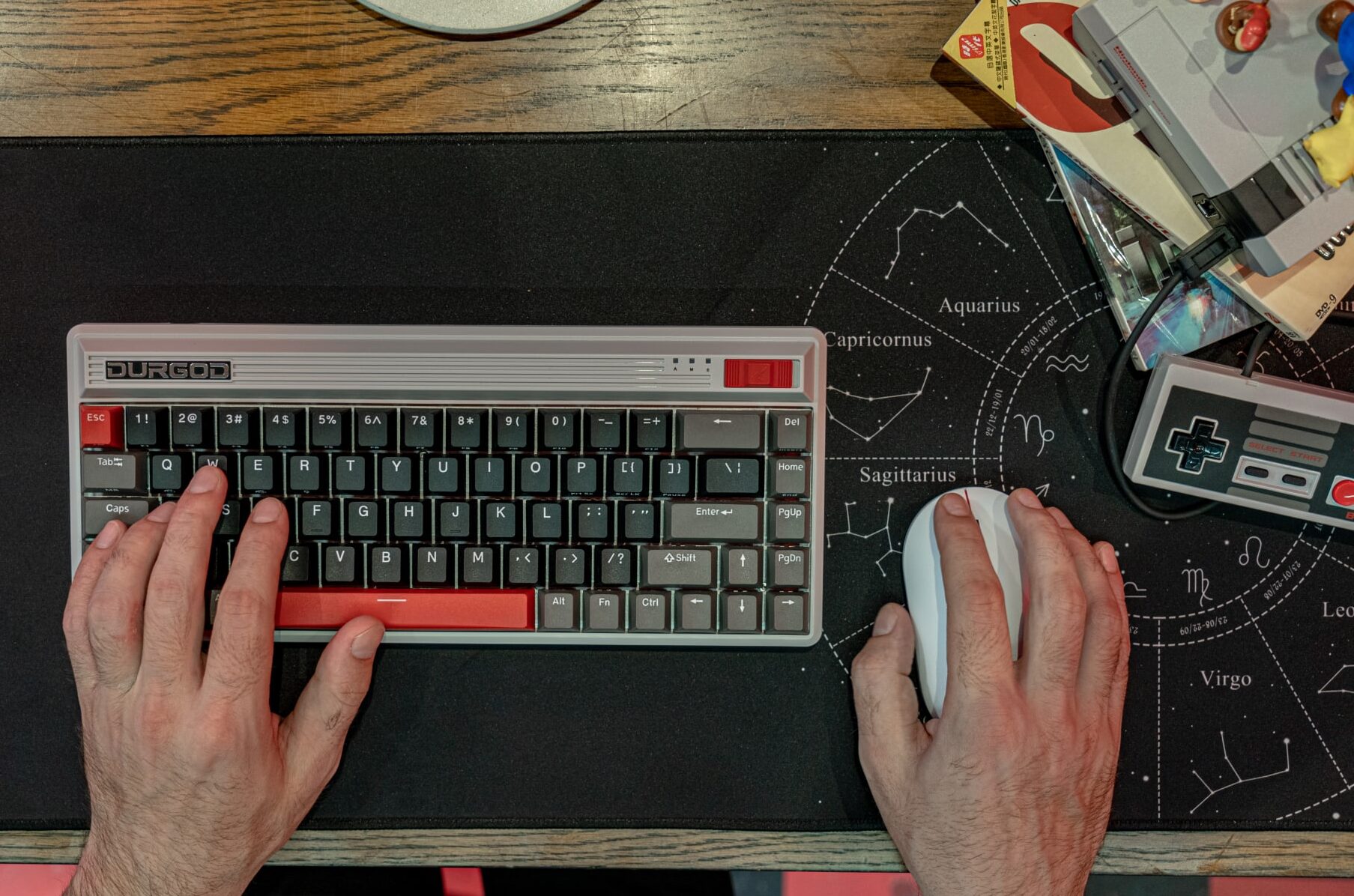Lubricating your mechanical keyboard switches improves their feel and performance. Proper lubrication reduces friction, enhancing key response and longevity.
Mechanical keyboards offer a satisfying typing experience, but they can benefit greatly from regular maintenance. Lubing your switches not only improves their smoothness but also minimizes wear over time. Many gamers and typists prefer the enhanced feedback a well-lubed switch provides.
The process may seem daunting, but with the right tools and techniques, anyone can achieve great results. This guide will walk you through the essential steps to lube your mechanical keyboard switches effectively. Whether you’re a seasoned enthusiast or a beginner, optimizing your keyboard’s performance will elevate your typing experience. Let’s dive into the world of switch lubrication and discover how to enhance your keyboard.
Silent keyboards are designed to reduce noise while typing. They are perfect for quiet environments. Many people prefer them for work and gaming. This guide will explore the benefits of silent keyboards.
Rising Demand For Quiet Workspaces
More people work from home. This increases the need for quiet spaces. Silent keyboards help maintain focus. They minimize distractions for everyone nearby.
- Remote work is becoming common.
- Open offices require less noise.
- Students need quiet for studying.
Many companies encourage silent typing. Employees appreciate the calm environment. Quiet keyboards can boost productivity.
Benefits Of Silent Typing
Silent typing offers several advantages:
- Reduced Noise: Less sound means fewer distractions.
- Improved Focus: Calm environments enhance concentration.
- Better Collaboration: Teams can work together without interruptions.
- Comfortable Experience: Soft keystrokes feel nice under your fingers.
Users report less fatigue with silent keyboards. This makes them great for long hours. Enjoy typing without the clatter!
The Science Of Sound In Keyboards
 Understanding the sound of your keyboard enhances the typing experience. Every keystroke produces a unique sound, influenced by various factors. This section explores how keyboards create sound and what affects their noise levels.
Understanding the sound of your keyboard enhances the typing experience. Every keystroke produces a unique sound, influenced by various factors. This section explores how keyboards create sound and what affects their noise levels.
How Keyboards Produce Sound
Keyboards create sound through mechanical actions. When you press a key, a switch activates. This activation generates vibrations. These vibrations travel through the keyboard’s structure. The sound produced varies by switch type.
- Mechanical switches: Produce distinct clicks or sounds.
- Rubber dome switches: Generate softer sounds.
- Optical switches: Offer quieter operation.
Each switch type has a specific sound profile. Users often choose switches based on their preferred sound. This choice impacts the overall typing experience.
Factors Affecting Keyboard Noise
Many factors influence keyboard noise levels. Key switch design, materials, and construction play crucial roles. Here’s a detailed breakdown:
| Factor | Impact on Sound |
|---|---|
| Switch Type | Determines sound level and quality. |
| Keycap Material | Affects resonance and tone. |
| Keyboard Frame | Influences sound dampening. |
| Lubrication | Reduces friction and noise. |
| Typing Technique | Can amplify or reduce sound. |
Each of these factors contributes to the overall sound. Experimenting with different combinations can yield interesting results. Users often find joy in customizing their keyboards for sound and feel.
Understanding the science behind keyboard sounds helps enhance your typing experience. Choose wisely based on your preferences and needs.
Mechanical Vs Membrane Keyboards
Understanding the difference between mechanical and membrane keyboards helps users choose wisely. Mechanical keyboards use individual switches for each key. Membrane keyboards have a single, flat layer. This affects performance, sound, and typing experience.
Sound Characteristics
Mechanical keyboards produce a distinct sound. Each keypress has a unique click or thud. This offers tactile feedback to users. Membrane keyboards are quieter. They provide a soft, muted sound. This difference can impact your typing experience.
| Type | Sound Level | Feedback |
|---|---|---|
| Mechanical | Loud | Tactile |
| Membrane | Quiet | Soft |
Pros And Cons For Silent Typing
Choosing the right keyboard affects silent typing. Below are the pros and cons for both types.
- Mechanical Keyboards
- Pros:
- Great tactile feedback
- Durable and long-lasting
- Customizable switches
- Cons:
- Can be noisy
- More expensive
- Pros:
- Membrane Keyboards
- Pros:
- Quiet operation
- More affordable
- Cons:
- Less tactile feedback
- Shorter lifespan
- Pros:
Key Features Of Silent Keyboards
Silent keyboards provide a quieter typing experience. They are perfect for shared spaces. Users enjoy a smooth and responsive feel. Understanding their key features helps in making the right choice.
Key Switch Types
Silent keyboards often use specific key switch types. Here are the most popular ones:
| Key Switch Type | Noise Level | Feel |
|---|---|---|
| Cherry MX Silent Red | Very Quiet | Smooth |
| Cherry MX Silent Black | Very Quiet | Stiff |
| Gateron Silent Brown | Quiet | Tactile |
| Razer Yellow | Quiet | Smooth |
Each switch type offers unique benefits. Choose one that matches your typing style.
Material And Design Considerations
Material and design affect the keyboard’s performance. Here are some aspects to consider:
- Case Material: Plastic or aluminum cases affect sound.
- Keycap Material: ABS or PBT keycaps enhance durability.
- Mounting Style: Floating or tray-mounted designs impact noise.
- Sound Dampening: Use rubber grommets for quieter typing.
Pay attention to these factors. They enhance the overall typing experience.
Customizing For Quiet: Diy Modifications
 Customizing your mechanical keyboard can enhance your typing experience. DIY modifications help in reducing noise. This section explores effective methods to achieve a quieter keyboard.
Customizing your mechanical keyboard can enhance your typing experience. DIY modifications help in reducing noise. This section explores effective methods to achieve a quieter keyboard.
O-ring Dampeners
O-ring dampeners are small rubber rings. They sit on the keycap stems. This modification softens the impact when keys bottom out.
- Benefits of O-Ring Dampeners:
- Reduces noise significantly
- Enhances typing comfort
- Easy to install
Installation is simple:
- Remove keycaps from the switches.
- Place O-rings onto the keycap stems.
- Reattach the keycaps.
Lubrication And Modding Techniques
Lubrication improves the feel and sound of switches. Applying lubricant makes keystrokes smoother. Choose the right lubricant for best results.
| Type of Lubricant | Recommended Use | Noise Reduction |
|---|---|---|
| Grease | For tactile and linear switches | High |
| Oil | For smoother actuation | Moderate |
| Mix | For customized feel | Varies |
Follow these steps for lubrication:
- Disassemble the keyboard.
- Remove the switches.
- Apply a thin layer of lubricant.
- Reassemble the switches and keyboard.
Keep the amount minimal. Too much lubricant can create a mess. Test your keyboard after modifications. Enjoy a quieter and smoother typing experience!
Top Keyboard Models For Silent Typing
Finding the perfect keyboard for silent typing is essential for a quiet workspace. Whether you type for work or play, a quiet keyboard enhances focus. Here are some of the best options available.
Best Silent Mechanical Keyboards
Mechanical keyboards can be loud. However, many models offer silent switches. These keyboards provide great tactile feedback without the noise.
| Keyboard Model | Switch Type | Noise Level |
|---|---|---|
| Keychron K1 | Gateron Low Profile | Very Quiet |
| Razer BlackWidow Lite | Razer Orange | Quiet |
| Ducky One 2 SF | Cherry MX Silent Red | Quiet |
| Logitech G915 | GL Tactile | Quiet |
These options cater to different preferences. Each keyboard combines performance with silence. Choose one that fits your style.
Top Quiet Membrane Keyboards
Membrane keyboards are often quieter than mechanical ones. They are perfect for a silent environment. Here are some top choices.
- Logitech K120 – Reliable and low-cost option.
- Microsoft Sculpt Ergonomic – Comfort with quiet keys.
- Razer Cynosa Chroma – Customizable lighting and quiet typing.
- HP K3500 Wireless – Cordless with a soft touch.
These keyboards work well for everyday tasks. They provide comfort and silence. Ideal for office settings or home use.
Ergonomics And Comfort In Silent Typing
 Typing should be enjoyable, not painful. Silent typing enhances your experience. Proper ergonomics play a key role. Lube your mechanical keyboard switches for better comfort. Smooth keystrokes reduce fatigue and improve focus.
Typing should be enjoyable, not painful. Silent typing enhances your experience. Proper ergonomics play a key role. Lube your mechanical keyboard switches for better comfort. Smooth keystrokes reduce fatigue and improve focus.
Importance Of Ergonomic Design
Good ergonomic design helps prevent strain. It promotes a natural hand position. Here are key benefits:
- Reduces fatigue: Comfortable typing means less tiredness.
- Improves posture: Keeps your wrists straight.
- Enhances productivity: Focus on tasks, not discomfort.
Ergonomic keyboards often have a curved design. This encourages a more natural typing angle. Lube your switches to complement this design. It creates a smoother typing experience.
Maintaining Comfort Over Long Typing Sessions
Long typing sessions can be tough. Comfort is essential for extended use. Here are some tips:
- Take breaks: Rest your hands every 30 minutes.
- Use a wrist rest: Supports your wrists during typing.
- Adjust your chair: Keep your feet flat on the ground.
- Position your keyboard: Keep it at elbow height.
Lubing your switches creates a quieter keyboard. Less noise means fewer distractions. A comfortable setup enhances your typing speed. Invest in ergonomics for a better typing experience.
Enhancing Your Typing Experience
Typing on a mechanical keyboard can feel amazing. With the right adjustments, you can improve your experience. Lubing your keyboard switches is one effective way to achieve this. It reduces friction and enhances the smoothness of each keystroke. You will notice a difference in sound and feel.
Software Solutions For Noise Reduction
Noise can be distracting. Luckily, software can help reduce it. Here are some popular options:
- AutoHotkey: Customize key sounds and actions.
- KeyTweak: Remap keys to reduce noise.
- Keyboard Layout Editor: Create layouts for quieter typing.
Using these tools can enhance your keyboard experience. Adjust settings to find what works best for you.
Creating The Ideal Typing Environment
The environment affects your typing experience. Here are some tips to create the perfect setting:
- Choose a quiet room: Less noise helps concentration.
- Use a desk mat: It absorbs sound and vibrations.
- Adjust chair height: Ensure your arms are comfortable.
- Lighting matters: Good light reduces eye strain.
Implement these suggestions for a better typing experience. Pay attention to your surroundings.
The Future Of Silent Typing Technology
The future of silent typing technology looks bright. Innovations aim to create quieter keyboards. Enthusiasts desire a peaceful typing experience. New technologies promise to meet these demands.
Innovations On The Horizon
Several exciting innovations are on the way. These advancements focus on reducing keyboard noise. Here are some noteworthy developments:
- Soft Switches: These switches provide a quieter experience.
- Dampening Rings: These rings minimize sound on key presses.
- Magnetic Switches: These switches produce less noise when activated.
Manufacturers are experimenting with new materials. Silicones and rubber offer sound-absorbing qualities. These materials enhance overall typing comfort.
Predictions For Noiseless Keyboards
The future holds exciting predictions for noiseless keyboards. Expect to see:
- Widespread Adoption: More brands will offer silent options.
- Advanced Technology: Smart keyboards will adapt to user needs.
- Customization: Users will personalize sound levels.
Market trends suggest a rise in demand for quiet keyboards. Gamers and professionals will prefer silent options. The typing experience will become more enjoyable.
Frequently Asked Questions
How Often Should I Lube My Keyboard Switches?
You should lube your keyboard switches every 6 to 12 months. This frequency helps maintain optimal performance. Regular lubrication reduces friction and enhances typing feel. However, personal preference and usage intensity can affect this timeline. Monitor your switches for signs of wear or noise for better timing.
What Type Of Lube Is Best For Keyboard Switches?
The best lubes for keyboard switches are specialized grease or oil. Look for products designed specifically for mechanical keyboards. Popular choices include Krytox, Tribosys, and Super Lube. Each type has its unique properties affecting sound and feel. Always ensure compatibility with your specific switch type for best results.
Can I Lube My Switches Without Disassembling Them?
While possible, it’s not recommended to lube switches without disassembly. Lubing without disassembly can lead to uneven application and mess. Disassembling your keyboard allows for thorough cleaning and precise lubrication. This ensures a smooth and consistent typing experience. It may take time, but the results are worth it.
What Tools Do I Need To Lube My Switches?
You will need a few essential tools to lube your switches. A switch opener, a small brush, and a lubricant are crucial. Tweezers can help with handling tiny components. Having a clean workspace is also important to avoid contamination. Gather everything before starting for a smooth process.
Conclusion
Lubing your mechanical keyboard switches can significantly enhance your typing experience. It reduces friction, improves responsiveness, and can even extend the life of your switches. Regular maintenance keeps your keyboard feeling fresh and smooth. Follow the steps outlined in this guide to achieve optimal results and enjoy a more satisfying typing journey.



